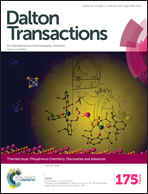Dehydrogenative coupling involving P(O)–H bonds: a powerful way for the preparation of phosphoryl compounds
Abstract
Because of the unique properties and wide applications, continuing efforts have been devoted to developing simpler and cleaner methods for the synthesis of organophosphorus compounds. Recently, transition metal-catalysed dehydrogenative coupling has been emerging as one of the powerful methodologies for constructing chemical bonds. Herein, we highlight the recent progress in the preparation of organophosphorus compounds via transition metal-catalysed dehydrogenative couplings of P(O)H compounds with Z–H compounds.

- This article is part of the themed collection: Phosphorus Chemistry: Discoveries and Advances

 Please wait while we load your content...
Please wait while we load your content...